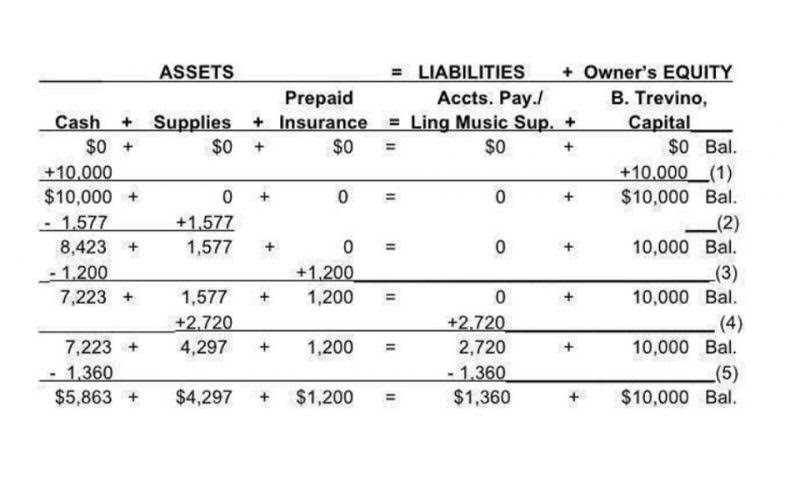Radio Gaushala 93.6 MHz , २९४२ पटक हेरिएको

Between CPC and cost per click, which is an entirely different metric. The conversion cost tells you how much you are spending on average to convert one customer. Also, this cost is commonly referred to as cost per conversion (CPC).
Google Ads Looker Studio
- The make-or-buy decision is a multifaceted one that extends beyond simple cost analysis.
- Prime costs and conversion costs are used in production-based businesses to determine the efficiency of the process of production for different products.
- The total conversion costs represent the sum of these two components, indicating the total expenses incurred by the company in converting raw materials into finished furniture products.
- And the best you can do is stay updated and make great use of these metrics.
- On the other hand, a production manager might be more concerned with the non-financial aspects, such as the capacity of the production line and the impact on employee morale.
- And within this rapidly evolving landscape, a new player has emerged – Programmatic Guaranteed deals.
But without proper optimization, even the best-written articles can fall flat. Overhead expenses can be challenging to track, but essential to conversion costs. It is vital to monitor overhead expenses such as rent, utilities, and insurance and allocate them appropriately to each product. Standard costing involves estimating the cost of producing a product before actual production begins. The estimated cost includes direct labor, direct material, and manufacturing overhead.


Programmatic Search
It also important to determine the cost of a product to make decisions about the price of the product. There are many different methods of determining the cost of a product, such as marginal costing, absorption costing, activity-based costing, target costing, etc. Prime costs are calculated by factory managers and reviewed by operational managers to ensure that the production process has Remote Bookkeeping been completed efficiently and effectively.

Getting Started with Programmatic Display Advertising
Each has its own example of how you would assess conversions with your given definition for the conversions. Conversion costs are calculated in order to know the cost per unit, which assists the company in deciding a price for the product. During June, Excite Company’s prime cost was $325,000 and conversion cost was $300,000. The two components of prime cost formula are direct materials and direct labor. By calculating the conversion cost per unit or per output measure, managers can compare the performance and productivity of different production units, departments, or divisions.
The total of the cost per unit for material ($1.17) and for conversion costs ($2.80) is the total cost of each contra asset account unit transferred to the finishing department ($3.97). Conversion costs are a crucial aspect of manufacturing and production processes, representing the expenses incurred in transforming raw materials into finished goods. Understanding conversion costs is essential for businesses to effectively manage their production costs and optimize operational efficiency. In this article, we’ll delve into what conversion costs are, provide the formula for calculating them, and offer examples to illustrate their application.

Understanding the variable cost component can inform short-run pricing decisions and optimal output levels. An insightful understanding of cost behavior is necessary for sound financial analysis. Conversion costs are classified as either fixed or variable, and recognizing the distinction is critical for cost management and decision-making. These activities might include machine setup, quality inspection, or material handling.
- As fixed asset value decreases, this can impact the total product conversion cost.
- It includes direct labor (workers’ pay) and manufacturing overhead (other production expenses).
- Enter CTV Advertising—a powerful tool that seamlessly combines the best of television and online marketing.
- The cost of direct labor is a significant factor influencing overall conversion costs, especially in labor-intensive industries such as apparel, textiles, and custom manufacturing.
- International PPC Agency Navigating the complexities of international markets can be daunting for businesses seeking to expand their reach.
Higher Education Marketing
In that case, the contract manufacturer may be responsible for purchasing and maintaining equipment, paying for utilities, and handling other overhead expenses. This can lower the total conversion cost of producing a product for the outsourcing company. Conversion cost is an important concept in accounting, particularly for manufacturers. It refers to the expenses incurred during the manufacturing process, which include direct labor and overhead costs.

Furthermore, the rent paid on the factory is $10,000 of which $2,000 is attributable to chair production. When costs are classified by their behavior, they are grouped together based on how these costs change in relation to the level of activity of the business. These costs can be classified into fixed, variable, semi-fixed or semi-variable and stepped fixed costs. Costs classified by behavior can be used in the decision-making process of a business. This classification can also be helpful in the budgeting process of a business.
Google’s AI
- The expenses involved in this transformation are known as the conversion cost of a product.
- Encouraging a culture of continuous improvement empowers workers to identify and address inefficiencies on the shop floor.
- Conversion costs include indirect materials, indirect labor, and other overhead costs.
- Direct expenses are costs directly traced to a particular product or process.
- AD Platform XAD In the ever-evolving landscape of digital advertising, standing out from the crowd is crucial.
- This can lead to higher conversion costs as it may require additional time or resources to produce the same amount of goods.
On the other hand, a financial analyst might focus on the allocation of overhead costs. Properly assigning indirect costs to products ensures that gross margin accurately conversion costs reflects the true cost of production. If overheads are not allocated correctly, it could either inflate or deflate the gross margin, leading to misinformed decision-making. In this example, the conversion costs for producing 100 wooden chairs are $5,000.
प्रकाशित मिति: २०२४-१२-२४ , समय : १०:०४:१७ , ८ महिना अगाडि
